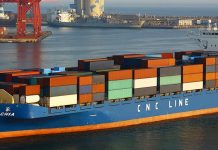
So far in 2024, China has increased its inventories of iron ore, coal and grains, which has been a positive demand driver.
Iron ore inventories in Chinese ports have seen a notable jump from 122 million tonnes at the start of the year to 154 million tonnes on 5 September. Coal inventories have increased to improve energy security and compensate for weaker mining, while low soya bean prices have encouraged purchasing.
“Between January and August 2024, Chinese seaborne dry bulk imports rose 6% y/y, defying concerns over China’s domestic demand, its real estate crisis and producer price deflation. A combination of inventory build-up and commodity-specific developments have contributed to strong import demand,” commented Filipe Gouveia, Shipping Analyst at BIMCO.
China’s stronger exports have contributed significantly to increasing import demand for iron ore and other ores. Bauxite imports, the ore used to produce aluminium, have continued to climb quickly, jumping 14% y/y so far in 2024.
“Strong Chinese dry bulk imports are key to a strong dry bulk market as 39% of cargoes head to China. So far this year, Chinese volume growth accounted for 73% of total dry bulk cargo growth. China has been crucial to ensuring a 61% average increase in the Baltic Dry Index (BDI),” stated Gouveia.
Ships in the Capesize and Panamax segments have benefited most with their cargo volumes increasing 6% y/y and 11% y/y respectively.
Despite the strong year-to-date growth, August volumes grew only 2% y/y, driven by weaker iron ore imports, the largest commodity by volume. Domestic steel demand remained muted and iron ore inventories are now at near historical highs.
Coal imports, the second largest commodity, still grew in August but import demand may come under pressure. China’s thermal coal import demand has been weakening due to stronger electricity generation from renewables and a recovery in coal mining.
Lastly, some advanced economies have been raising tariffs on Chinese exports. For now, the impact on dry bulk imports has been limited, but should other countries follow, pressure may mount. A second Trump presidency could also add further pressure.
“Amid recent developments and high inventories, dry bulk shipments to China may slow over the coming months. Government stimulus and a pick-up in domestic demand would be needed to maintain high import growth,” explained Gouveia.
This article is written by Filipe Gouveia, Shipping Analyst at BIMCO.





